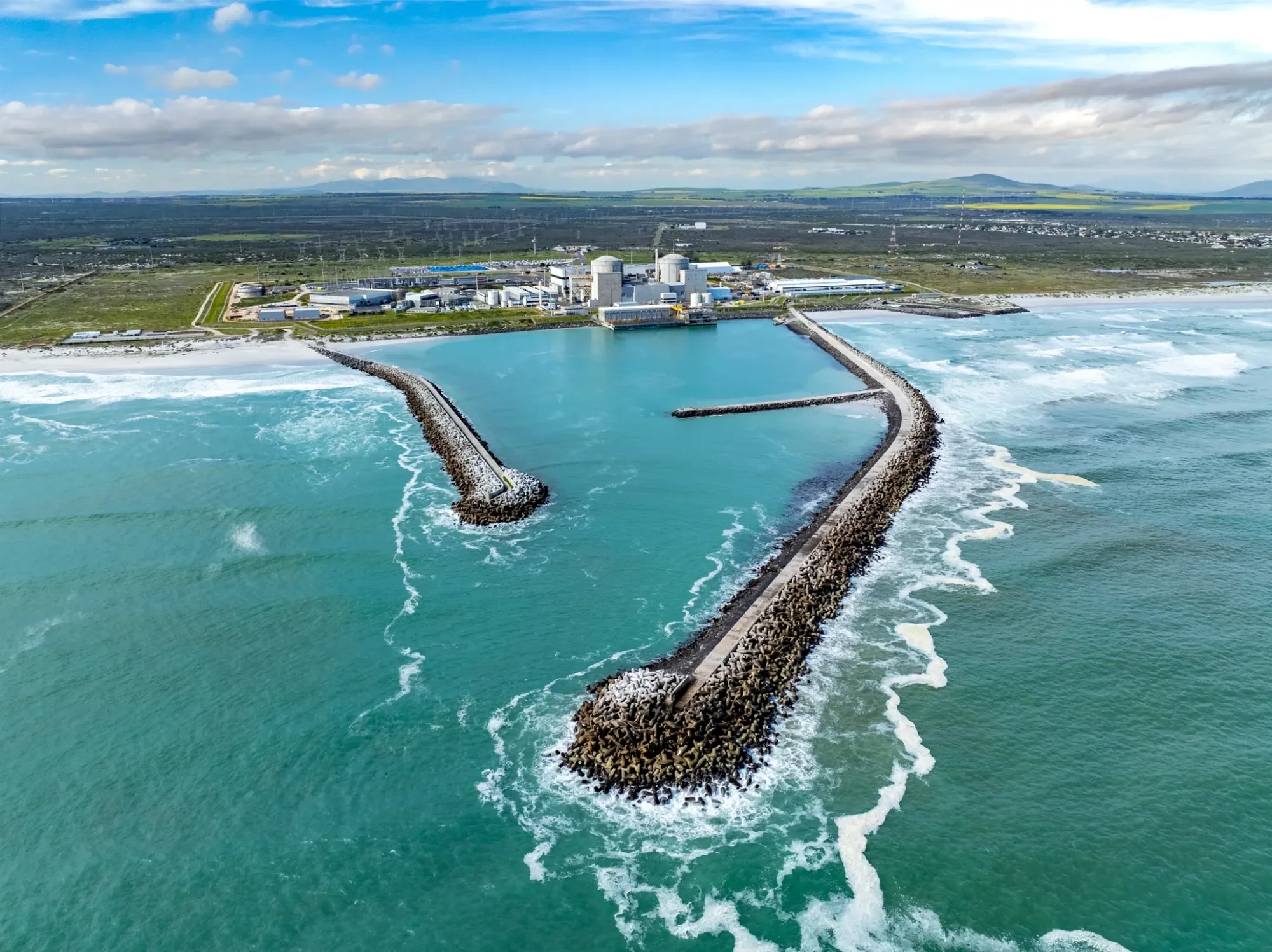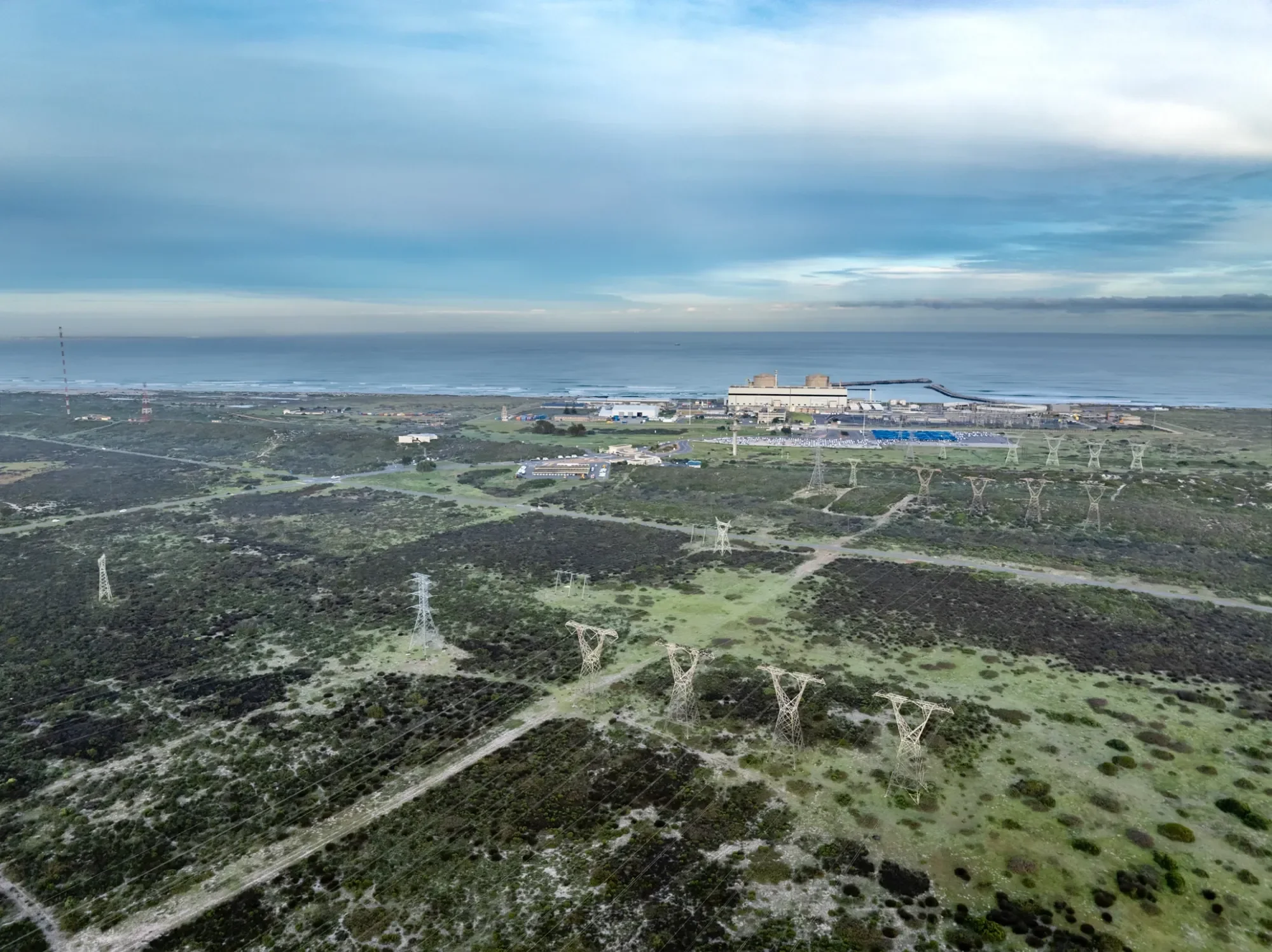Licensed to Fly: Aerial Drone Solutions at Koeberg Nuclear Power Station
There are drone jobs, and then there are once-in-a-lifetime opportunities. Recently, I had the privilege of flying at Koeberg Nuclear Power Station, just outside Cape Town. For anyone who knows drones and South African aviation regulations, you’ll understand just how significant this was.
Koeberg is South Africa’s only nuclear power station. It’s not just another industrial site, it’s a national key point and sits inside highly restricted airspace (FAR36). That means you cannot simply show up with a drone and start flying. Permission, planning, and strict compliance with aviation and security protocols are non-negotiable. Being granted access to fly here was a huge milestone for me and for Aerial Drone Solutions.
Why Koeberg Is So Unique
Most people know Koeberg as the power plant that keeps the lights on in Cape Town, but the site is far more impressive when you look closer.
It generates around 5% of South Africa’s electricity. This makes it one of the single most important energy facilities in the country.
It is the only commercial nuclear power station on the African continent. That alone makes it stand out globally.
It is designed with world-class safety features, including the seismic float, an underground structure created to protect the reactors and critical equipment from earthquakes.
It sits in controlled and highly sensitive airspace, which means every aircraft, manned or unmanned, is subject to strict rules.
And here’s the part I am most proud of: I became the first drone pilot ever to fly inside the underground seismic float. That is not just rare, it is history in the making.
The DJI Mavic 3 at Koeberg
For this project, I used the DJI Mavic 3. Many people ask why I chose this drone instead of a larger platform like the Inspire or Matrice. The answer is simple:
The Mavic 3 is compact and highly stable, which made it perfect for operating in tight and sensitive environments like the seismic float.
Its Hasselblad camera system delivers professional-grade images and video, ensuring every shot met the strict requirements of the project.
The flight time and safety features gave me confidence when working in an environment where precision and reliability were non-negotiable.
Even though I regularly operate larger drones like the DJI Inspire 3 and Matrice series, this project showed the Mavic 3’s value in specialized industrial work.
The Process Behind Flying in Restricted Airspace
Flying at Koeberg was not as simple as unpacking a drone and taking off. Here is a glimpse into what it took to make this flight possible:
Approvals and permissions: Multiple layers of clearance were required, from Koeberg itself, Eskom security, and aviation authorities.
Compliance with SACAA regulations: Every flight had to follow strict guidelines set by the South African Civil Aviation Authority.
Risk assessments: Detailed flight planning, safety protocols, and emergency procedures were developed and approved.
On-site coordination: I worked closely with Koeberg staff to ensure every movement was aligned with their safety and security requirements.
This kind of preparation is exactly why unlicensed pilots cannot operate in places like Koeberg. The paperwork, security protocols, and trust required go far beyond hobby flying.
The Importance of Flying Legally
Flying at sites like this is not only about skill, it is about being properly licensed, certified, and trusted. When you are operating in restricted airspace, close to critical infrastructure, every step has to be by the book. That means working under SACAA regulations, carrying the correct approvals, and demonstrating professionalism at all times.
Unlicensed pilots could never access a site like Koeberg, and for good reason. The risks are too high, and the consequences too serious. If something were to go wrong with an unlicensed pilot, the legal and safety implications would be devastating.
This kind of work highlights why hiring a licensed drone operator is not just a box to tick, it is the difference between flying legally and safely, or not flying at all.
Why This Project Matters for Aerial Drone Solutions
Being one of only a handful of drone pilots to ever fly at Koeberg, and the only one to do so in the seismic float, is a major achievement. It shows the level of trust, professionalism, and technical expertise that Aerial Drone Solutions brings to every project.
For me, this was not just another job. It was proof of what is possible when skill, experience, and the right certifications come together. It also demonstrated how drone technology is continuing to find its place in industries that were once thought impossible to access.
How Drone Technology Supports Critical Infrastructure
Koeberg is not the only site that benefits from professional drone operations. Across South Africa and the world, drones are increasingly used to:
Inspect power plants and energy infrastructure without shutting down operations.
Survey and map construction projects faster and more safely than traditional methods.
Monitor hard-to-reach areas where manned inspection would be costly, dangerous, or impossible.
Capture visual records that support maintenance, safety, and compliance.
By combining expertise, the right equipment, and legal compliance, drones are becoming an essential tool in the management of sensitive infrastructure.
Final Thoughts
Flying the DJI Mavic 3 at Koeberg Nuclear Power Station was one of the proudest moments of my career. It showed not only the trust placed in Aerial Drone Solutions, but also how far the drone industry in South Africa has come.
From energy to construction to live events, the opportunities for drones are endless—but they come with responsibilities. At national key points like Koeberg, those responsibilities are magnified. This project proved that with the right training, licensing, and approach, drones can safely operate even in the most sensitive environments.
FAQ
Q: Why is flying at Koeberg such a big deal?
A: It is South Africa’s only nuclear power station, designated as a national key point, and located within highly restricted (FAR36) airspace—requiring rigorous security and operational clearances.
Q: What makes the seismic float special?
A: The seismic float is a unique underground structure built to protect the reactor and critical equipment from earthquakes. Flying inside it had never been done by drone—until now.
Q: Why is having a license so important?
A: Sites like Koeberg demand compliance with strict regulations (e.g., SACAA approvals), professionalism, and trust. Without proper licensing and certification, access—and safety—is simply not possible.
Q: What drone was used for this project?
A: The DJI Mavic 3, chosen for its stability, image quality, compact design, and reliability in a controlled environment.
Q: What value does this project bring to Aerial Drone Solutions?
A: It showcases the company’s trustworthiness, expertise, and ability to handle sensitive, high-stakes operations. It sets Aerial Drone Solutions apart in the South African drone industry.
Ready to Work With a Licensed Drone Pilot?
If you need professional drone services for commercial, industrial, or corporate projects, work with a team that has proven experience in restricted airspace and high-security environments.
📧 Email: info@aerialdronesolutions.co.za
📞 Phone: +27 72 049 6035
🌐 Website: www.aerialdronesolutions.co.za
Let’s discuss how we can bring the same level of professionalism and precision to your project.


